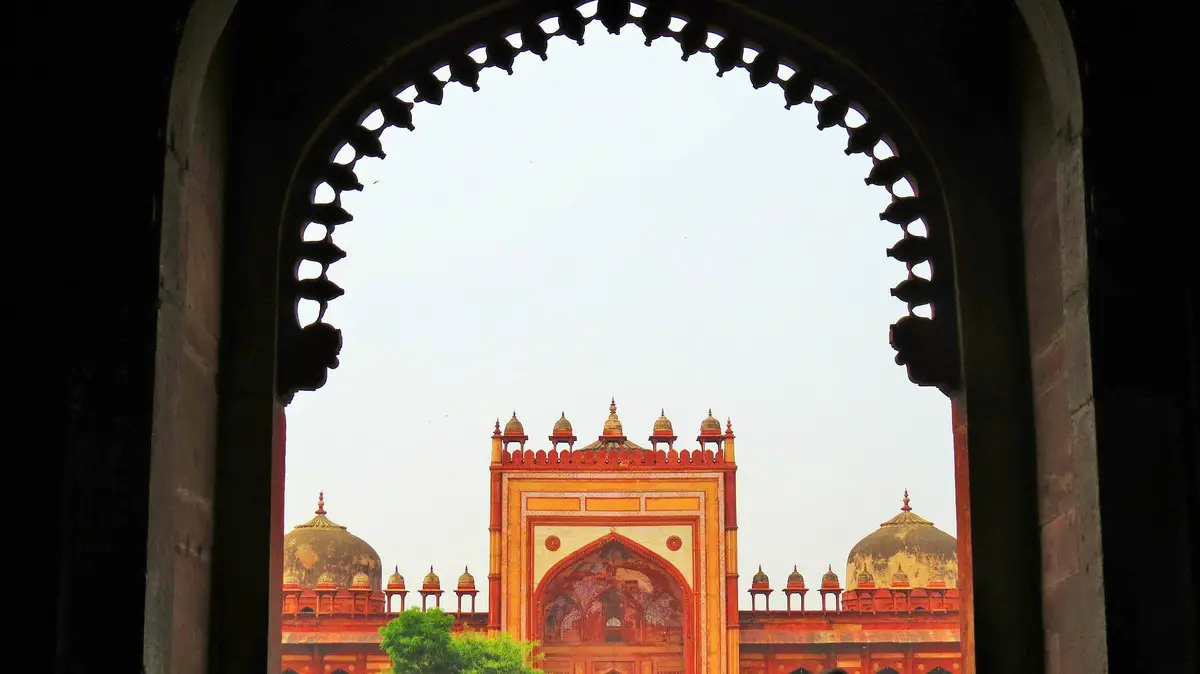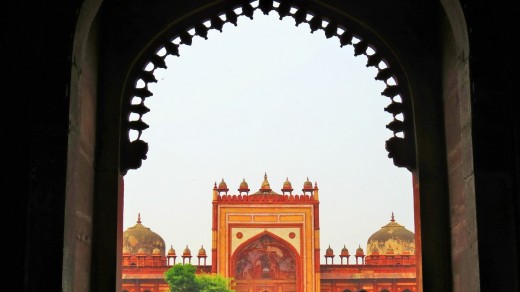When Emperor Akbar Encouraged Christian Art guide, Mughal history, Religious painting
When Emperor Akbar Encouraged Christian Art Guide
15 December 2021
Jalal-ud-din Muhammad Akbar, the third Mughal emperor, was greatly intrigued by Christianity and Christian themed art. Thus, Akbar was bestowed with the title of Akbar the Great. However, unlike all his predecessors and successors, he didn’t believe in religious discrimination. Instead, Akbar was fascinated by the world religion and made attempts to learn about the same.
When Mughal Emperor Akbar Encouraged Christian Art
Influenced by the Mongolian ruler, Genghis Khan, Akbar encouraged all religions in his court. He borrowed the sects and customs of other beliefs and fused them with his Muslim faith. That is why, when he saw the opportunity to welcome Christianity in his court in the form of Jesuit priests established at the Portuguese enclave of Goa, he couldn’t resist.
Let’s unravel the exciting facts about how the famous biblical paintings in the court of this great ruler came to be:
The Appeal of the Jesuit Missionaries
In the mid-16th century, Akbar ascended the Mughal throne. At the same time, the Portuguese stationed themselves at the western coast of India. They set up trading posts at Bassein, Cochin, and the Pearl Fishery Coast, soon securing its identity as Portuguese India. The Jesuit order was sent from Europe to engage in missionary and spiritual activities with the European population in India.
These Jesuits built churches and colleges in India and decorated them with a Christian touch and style. However, most of the artists were Hindus and took the liberty to fuse the European Renaissance style with Indian delicacy. This helped to spread their Catholic beliefs and convince the Indian population to turn to Christianity.
Akbar’s New Religion
Northern India first had Christian encounters in 1579, when Akbar invited the Jesuit missionaries to his royal court. Apart from a keen interest in learning about Christianity, Akbar intended to borrow the teachings of the Jesuits for his new religion, ‘Din-I-Illahi’ (divine faith). This religion aimed at amalgamating the sensibilities of numerous faiths through the cultural exchange of European and Persian art.
When the Jesuits were exhilarated to learn about Akbar’s invitation, Father Rudolf Aquaviva, Father Monserrate, and Brother Francis Henrique sailed for Agra, armed with an eight-volume edition of the Royal polyglot Bible.
When Akbar first saw the biblical oil painting of Mary, he knelt in front of it due to Mary’s presence in the Quran. Highly enchanted by the Bible, Akbar ordered his artists to paint hundreds of portraits of Jesus, Mary, and Christian saints in the Renaissance style.
The Spread of Biblical Paintings in Mughal Aristocracy
The motifs and Christian paintings soon started filling in the royal court at a surprising pace. Akbar displayed these paintings in his royal sessions, tombs, harems, throne room, and coronations. Prince Salim was obsessed with imitating European style accurately and ordered his artists to guide Jesuit Fathers for details.
The frescos and Moghul-style miniatures carried the essence of Indian origin. For example, “Jahangir presents Prince Khurram with turban ornament” illustrates Jahangir and Prince Khurram as the main subjects, with the motifs in the painting of Biblical foundation. This kind of fusion of Mughal rulers and Christian attributes encapsulated most of the Christina royal art of Akbar’s court.
The Arrival of Two More Jesuits Missions
As the influence of the Christian faith increased in North India, the Portuguese sent more priests on two more missions. In addition, they bought art pieces depicting Christian imagery to impress the Mughal king further.
This led to a spurt in the production of biblical paintings. The fort at Agra had murals of Christian saints lined on the walls behind the throne. These religious motifs were printed even on books, including the Padshah-nama.
“Mother and Child with a White Cat” from Jahangir’s album depicts a woman, and a child draped in European clothes. However, the carpet that she lies on has Persian designs and motifs. Likewise, the curtains in the background have elements of Renaissance, while the village behind it has Indian characteristics.
The Failure of the Jesuit Priests
The prime mission of the Jesuits to turn the emperor along with his empire into Christianity proved to be a massive fail. Unbeknownst to them, Akbar’s order of spreading the Christian imagery had to do with his royal propaganda. He cunningly refrained from displaying the Biblical paintings outside of court in fear of offending the other religions.
Akbar sought to establish political companionship and religious tolerance through the Jesuits. He was aware of the Muslim’s minority status and used the Portuguese to affirm his rule and power. The three missions faced the same disappointment, and the Jesuits left Akbar’s court when they were assured that no conversion was ever going to transpire.
When Emperor Akbar encouraged Christian Art Conclusion
Akbar and Jahangir proved the divine affirmation of their rule with the help of Jesuits and Biblical art. Some of these famous christian paintings are available at 1st Art Gallery, which is the world’s largest supplier of oil paintings and fine art reproductions. So, travel to the Mughal era and experience the European Renaissance embedded in them!
Comments on this guide to When Emperor Akbar Encouraged Christian Art article are welcome.
Architecture
Contemporary Scottish Capital Property Designs – recent architectural selection below:
Rowanbank Gardens Edinburgh Property
Rowanbank Gardens Edinburgh Housing
Sciennes Primary School Building, south of the city centre
Sciennes Primary School Edinburgh building extension
525 Park View, Ferry Road, north of the city centre
525 Park View, Ferry Road homes
Comments on this When Emperor Akbar Encouraged Christian Art article are welcome.


